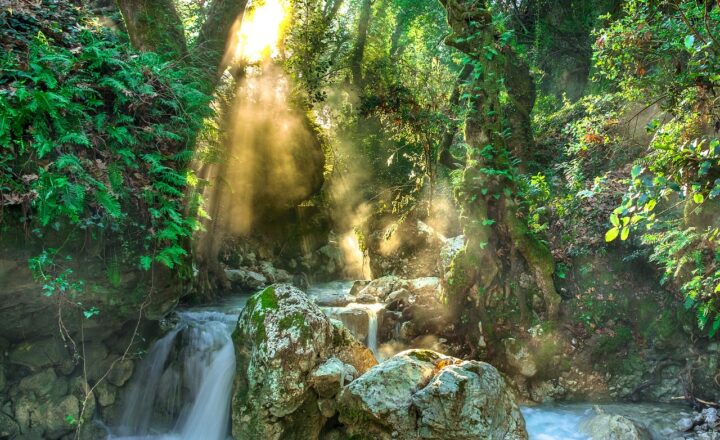The Hidden World of Underground Rivers, Caves, and Ecosystems That Hold Nature’s Best-Kept Secrets
November 17, 2024

Nature is replete with wonders, but few realms are as captivating as the hidden world of underground rivers, caves, and ecosystems that lie beneath our feet. This intriguing landscape boasts unique geological formations, diverse subterranean wildlife, and ecosystems that play critical roles in our environment. In this article, we will explore the mysteries and marvels of these underground spaces, shedding light on their ecological significance, fascinating features, and the ongoing efforts to protect them.
1. The Formation of Underground Rivers and Caves
The underground rivers and caves we see today are the result of millions of years of geological processes. Many caves form through the process of chemical weathering, particularly in limestone geology. Rainwater, slightly acidic due to dissolved carbon dioxide, seeps into the ground and slowly dissolves the limestone to create intricate systems of caverns and passageways.
This natural erosion can lead to spectacular formations, such as:
- Stalactites and Stalagmites: These formations occur when mineral-rich water drips from the cave ceiling and leaves deposits as it evaporates. Stalactites hang from the roof, while stalagmites grow upwards from the floor.
- Flowstone: Smooth sheets of mineral deposits that form along cave walls, resembling flowing water frozen in time.
- Columns: When stalactites and stalagmites grow to connect the ceiling and floor, they form breathtaking columns that can reach impressive heights.
These natural wonders not only draw tourists and adventurers but also play a crucial role in understanding the Earth’s geological history.
2. Ecological Importance of Underground Rivers and Caves
Beneath the surface, underground rivers and caves provide unique ecological niches that host specialized flora and fauna. The biological diversity found in these ecosystems is extraordinary, as many species have evolved to thrive in complete darkness, often exhibiting features such as:
- Loss of Pigmentation: Many cave-dwelling species, like the eyeless cave fish, have adapted to their dark environment by losing their pigmentation, becoming pale or even transparent.
- Enhanced Sensory Systems: Species in these habitats often rely on heightened senses, such as taste and smell, to navigate and find food in the absence of light.
- Unique Ecosystems: Underground ecosystems rely on detritus from above ground or specialized prey such as bats and cave crickets, creating a network of interdependency that showcases the fragility of these environments.
Beyond their unique inhabitants, underground rivers are also vital for water filtration and replenishing aquifers. They provide a fresh supply of water that supports surface ecosystems and human populations.
3. Notable Underground Rivers and Caves Around the World
Discovering the world’s famous underground rivers and caves showcases the beauty and diversity of these wonders. Here are a few notable examples:
- The Waitomo Glowworm Caves, New Zealand: Renowned for its glowing larvae that light up the caves like stars, this system of caves attracts thrill-seekers and nature lovers alike.
- The Mammoth Cave, Kentucky, USA: The longest cave system in the world, Mammoth Cave is home to a unique biosphere and significant archaeological discoveries, showcasing 6,000 years of human history.
- The Puerto Princesa Underground River, Philippines: A UNESCO World Heritage site, this navigable river winds through stunning rock formations and rich biodiversity, making it a hotspot for ecotourism.
- La Cueva de los Tainos, Dominican Republic: This vast cave system features ancient Taino rock art and has enormous ecological importance as a habitat for various wildlife species.
Each of these locations offers a glimpse into the hidden complexities of our planet, reminding us of the invaluable natural treasures we must work to protect.
4. Threats to Underground Rivers and Cave Ecosystems
Despite their ecological significance, underground rivers and caves face numerous threats:
- Pollution: Runoff from farming, industrial activities, and urban development can contaminate water sources, harming the delicate ecosystems dependent on clean water and air.
- Over-Exploitation: Caving, tourism, and mining activities can disrupt the fragile balance of underground ecosystems, leading to habitat destruction and species extinction.
- Climate Change: Changes in precipitation patterns can impact the flow of underground rivers, affecting the water supply to surface ecosystems and the wildlife that depend on them.
Conservation efforts are underway across the globe to mitigate these threats. These efforts include:
- Establishing Protected Areas: National parks and reserves can provide legal protections for sensitive environments to ensure sustainable use and conservation.
- Public Awareness Campaigns: Engaging local communities in education and responsible tourism can help cultivate respect for these ecosystems and their importance.
- Scientific Research: Ongoing studies on underground ecosystems can enhance conservation strategies and inform better policies for protection.
5. The Future of Underground Explorations
As the fascination with underground ecosystems continues to grow, so does technology that facilitates exploration. Today, scientists employ:
- Drones and Remote Sensing: These tools allow researchers to cover vast cave systems quickly and gather data without disturbing sensitive habitats.
- Biological Sampling Techniques: Genetic sequencing and other lab technologies enable the identification of species and study biodiversity in previously unexplored areas.
- Publicly-Engaged Science: Crowdsourced caving initiatives enable amateur enthusiasts to participate in documenting and understanding cave systems around the world.
The future holds immense potential for better understanding these hidden worlds. As we venture deeper, the importance of responsible exploration and conservation will be paramount to ensure that these natural wonders endure for future generations.
Conclusion
The underground rivers, caves, and ecosystems are a testament to nature’s unrivaled creativity and resilience. Protecting these hidden wonders is essential not only for the diverse species that call these places home but also for our environment as a whole. As we uncover their mysteries, let us commit to preserving these valuable ecosystems and promoting sustainable exploration methods. Together, we can unlock nature’s secrets that lie beneath our feet and appreciate the beauty and complexity of the hidden world waiting to be discovered.






